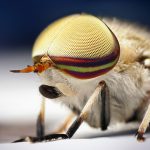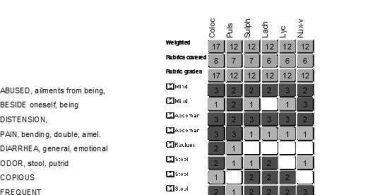Starting in this issue, each month Hpathy will present:
“Dr. Deva Khalsa’s Veterinary Tips”

Dr. Deva Khalsa
Dr. Deva Khalsa V.M.D. is a graduate of the University of Pennsylvania, a Fellow and Professor of the British Institute of Homeopathy and has lectured both nationally and internationally. She is the co-author of ‘Healing Your Horse: Alternative Therapies’ and Dr. Khalsa’s Natural Dog‘. Her practice includes homeopathy acupuncture, Chinese Herbs, nutrition, N.A.E.T, J.M.T. and other modalities. Her philosophy is to use whatever it takes to restore health. Dr. Khalsa’s practice is in New Zealand but she consults by internet and phone with pet owners from the US, Canada, Australia, South Africa, New Zealand, Europe and the UK. http://www.doctordeva.com
Dr. Deva Khalsa’s Veterinary Tips
AS: What is the problem with chemical flea and tick collars? Are there safer substitutes?

In 2009 the Environmental Protection Agency began reviewing the safety of spot-on flea and tick products and what they found was not pretty. Additionally, the Washington based Center for Public Integrity (CPI), a non-profit investigative news organization and the National Resources Defense Council, an environmental advocacy group, have published reports about the safety of both over- the- counter and prescription flea and tick products.
All flea and tick products are made up of “active” and “inert ingredients”. The active ingredients target and kill fleas – but some of the inert ingredients are also toxic, although the word suggests that they’re safe. Unfortunately, all the “active” ingredients in the spot-on preparations have also been linked to serious health problems in animals.
Despite advertising to the contrary, the ingredients of commonly used topical treatments do enter our pet’s internal systems. As one example, Dr. Dobozy of the EPA’s Pesticide Division did a study with radioactive fibronyl (the active ingredient in Frontline, Parastar, EasySpot and the new over the counter Sentry Fiproguard) and found it in the fat, organs, urine and feces of dogs. Merial’s web-site states that fipronil is absorbed into the sebaceous glands of the skin which provide a natural reservoir, creating the impression that it does not migrate into your dog’s body. Laboratory tests have shown that with long term exposure at low doses fipronil has the potential for nervous system and thyroid toxicity, thyroid cancer, altered thyroid hormone levels, liver toxicity, kidney damage, convulsions, whining, barking, crying, loss of appetite, incoordination, reduced fertility, fetus mortality, smaller offspring, loss of hair at or beyond the point of application, moist inflammation, chemical burn and itching. Whew… that was a mouthful!
The rub is that lots of folks are telling me that it’s not working even against fleas and ticks anymore. According to pesicide.org fipronil is an extremely active molecule that disrupts the brain and spinal cord by interfering with the ability of these nerve cells to transmit nerve impulses. “Fipronil also disrupts nerves in animals other than insects, including humans, but it does not bind as tightly to these nerve cells as it does to insect nerve cells.” I can’t help but think of children cuddling their dogs when I read that. When exposed to light it breaks down into a molecule called fipronil-desulfinyl, which according to the EPA, is 10 times more toxic than the fipronil itself. What does this mean: (a) don’t put the plastic vials of fipronil in the sun (b) don’t let your dog bake in the sun after you’ve applied the stuff (c) short haired pooches using fipronil products need to stay out of the sun (d) all of the above ?
Most folks consider the natural alternative, the pyrethrins (naturally occurring compounds from the chrysanthemum plant) and pyrethroids (the synthetic counterpart), as less hazardous. In fact, the contrary has been irrefutably proven. Information released through the Freedom of Information act to CPI showed that from 2002 through 2007 at least 1,600 pet deaths from pyrethroid spot on treatments were reported to the EPA. That’s nearly double the number of reported fatalities linked to flea treatment without pyrethroids. CPI’s “Perils of the New Pesticides” project was based on an analysis of 90,000 adverse reaction reports. I shudder to think how many people don’t report an adverse reaction.
Pyrethriod spot-ons also accounted for more than half of ‘major’ pesticide pet reactions, including brain damage, heart attacks and seizures. A possible explanation for the number of incidents involving pyrethroid spot-ons, according to the report, is the high concentration of pesticides they contain. The report also notes that while the pyrethroid spot-ons are more concentrated than the fipronil or imadocloprid products, they are actually less toxic than these products. A relatively new product, Vectra 3D, ups the % of Permethrin in their product to a whopping 36.08%, again due to the growing resistance of those little buggers.
Permethrin is another synthetic chemical, belonging to the family of synthetic chemicals called pyrethroids and functions as a neurotoxin. Chemical burns are commonly reported and there is even a class action suit (BioSpotVictims.com) against Vectra and Vectra 3D which is also sold as Firstshield and Fistshield Trio), Biospot Flea and Tick Control, Defend EX spot Treatment and Zodiac FleaTrol . Spot all contains either or both of the active ingredients Permethrin and/or Pyriproxyfen. Permethrin as also been implicated as a carcinogenic insecticide causing lung cancer and liver tumors in laboratory animals. This is also suspected of disrupting endocrine function and acts as a neurotoxin, causing tremors, increased aggressive behavior and learning problems. Could these products be one of the reasons we are seeing a virtual epidemic of hypothyroid dogs?
Not to leave anybody out, Advantage contains the active ingredient Imidacloprid, a systemic insecticide which acts as an insect neurotoxin and belongs to a class of chemicals called the neonicotinoids. Neonicotinoids are a class of insecticides acting on the central nervous system of insects with lower toxicity to mammals. In laboratory studies imidacloprid has been found to cause thyroid lesions and liver toxicity, increase cholesterol levels( this is commonly seen in bloodwork from hypothyroid dogs) and has the potential for damaging the kidneys, liver, thyroid, heart, lungs, spleen ,adrenal, brain and gonads. As a neurotoxin it has caused incoordination, labored breating and muscle weakeness. When this drug was tested after it’s introductions in 1994, researchers found an increase in frequency of birth defects when it was tested on mice, rats and dogs.
There are so many ingredients and so many flea and tick products out on the market that I can’t mention them all. I advise you to read labels and study the ingredients of the product that you’re using. As luck would have it, the fleas and ticks are getting resistant to many of the ingredients that we have been using for years. So then what’s in store for our dogs? I certainly hope they don’t come up with something akin to the solution in the following story for Roundup resistant weeds.
There’s Only One Way Out of This Mess
There’s only one way out of this mess and that is to go back to Mother Nature. There are some old fashioned remedies that fleas and ticks haven’t seen for awhile so maybe we can surprise them. Garlic has had a bum rap recently and for no good reason. Some internet sites have stated that it is toxic for dogs. Heavens, a 50 lb dog would have to eat 75 large cloves or more in every meal for any toxicity to occur. Three large cloves of garlic for a 90 lb dog twice a day and one medium clove is indeed safe. Garlic has been fed to dogs as long as I’ve been in practice to help prevent flea infestation. There are many products on the market containing garlic for this very purpose. Both powdered and raw garlic are effective in repelling fleas and ticks although raw garlic has significantly more health benefits. When using garlic as a flea preventive it’s important to use a castile soap or detergent free shampoo. Dogs don’t sweat as humans do and the garlic ‘aroma’ comes out in the oil on their coat. It takes several weeks for the garlic compounds to build up in the oil and a detergent shampoo removes the oil and you’re back to square one again
Of all of garlic’s reputed benefits, perhaps the best well known is its use as a natural antibiotic with reports going back through history. In fact, Pasteur noted garlic’s antibacterial activity in 1958. Modern researchers have found that garlic has a broad-spectrum anti-bacterial effect. Additionally, bacteria don’t seem to build up a resistance to garlic as they do to many modern antibiotics. It’s antifungal, antiviral and antibacterial effects can contribute to the healing process. You’ve got a very important added benefit in that daily garlic will help fight off tick borne diseases. Garlic increases general immune activity along with the activity of Killer Cells (cells that seek out and kill invading bacteria and cancer cells).
There’s a secret to releasing the healing powers of garlic. Allicin is the most powerful medicinal compound derived from garlic, providing the most important health benefits. Garlic has to go through a chemical process so a very beneficial compound called allicin can be released. You must finely chop or crush a garlic clove then wait for5-10 minutes to allow the chemical reaction to occur. A host of studies provide evidence that the allicin in garlic works to inhibit cancer formation.
Ticked Off, by Deserving Pets, is a contact flea and tick killer. It contains the safe and natural Southern Red Cedar Oil, which many other products contain. This helps to repel pests but doesn’t kill them. Ticked Off also contains safe and effective hydrolyzed silica, which gets into the cuticle of the pest and effectively eliminates it. There are many natural products out there with scented herbs to repel fleas and ticks but we all know that a desperate flea or tick ignores herbal signals. The only sure fire totally effective flea and tick repellent that I have ever seen is your dog getting skunked. I’m not telling you and your dog to go out and upset a skunk but in years of practice, I’ve never had a dog who was sprayed by a skunk get fleas or ticks. In fact, when I questioned the owners why they hadn’t washed their dog in months, to a person they proudly replied that they were getting no ticks and fleas and were ‘all natural’.
See Dr. Khalsa’s interview in Hpathy Feb 2010:
https://hpathy.com/homeopathy-interviews/dr-deva-khalsa/
This information was originally published in “Dog’s Naturally” magazine” http://www.dogsnaturallymagazine.com/






Great, informative write-up! Can we have an article on the excessive number vaccinations pets are supposed to get time and time again? What is that doing to the animals? Also, worm medicines, commercial pet foods….Gee, I seem to be full of questions!
I recently adopted a little dog and I immediately switched him to raw meat and bones. So far I haven’t seen a flea and he hardly sheds at all. I bought some essential oils for the fleas but I haven’t needed to use anything yet. I hope it stays this way!
using garlic to prevent tick infestation is effective but its effectiveness may also increasd many fold by adding tumeric and neem(melia azadirachta) leaves with garlic.
Nice article! How about the use of Diatomaceous Earth? I hear it works nicely! Thank you again!
brilliant article ,we need more of these pet related articles.
Even animal lovers use poison,not thinking it has adverse effects of their pets.
Flea spray/tick lotion/vaccines all contain highly TOXIC chemicals!
“everyone does it, its the law”…….If there is a will there is a way to avoid all such poison.
I have personally never used such horrid chemicals on my pets,only homeopathics.
Thanks dr. Deva !!!!!!
Do you have any suggestions for a cat? Cats can not ingest garlic.
intesting.How the natura teach us treatment.
what is myristica and how many pellets are in a dose? The bottle I seen says 5 pellets for adults and children 3x daily. Can you please clarify?